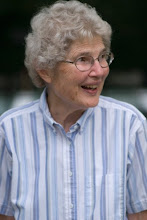
It happened on Christmas day.
I woke up around 6 a.m. and pulled on a khaki kurta pajama before going to plug in the Christmas lights. This particular pajama had been purchased by my grandfather, Gurcharan Singh Gill, on one of his many trips back to Punjab and given to me as a gift when I was recovering from testicular cancer surgery in 2008, because kurta pajama are far more comfortable than most Western clothes. It seemed like a good thing to wear on a lazy Christmas morning, one which I planned to spend mostly curled up on a couch, basking in my five-year-old daughter’s joy.
Kira’s first Christmas joy, as it turned out, was sleeping until 10 a.m. Luckily, our family tradition is to open one present on Christmas Eve, so I had a new book from my wife to keep me company. By the time Kira woke up, her mother was in the shower and I was immersed in Steve Coll’s The Bin Ladens: An Arabian Family in the American Century.
After opening her stocking, Kira came to sit by me.
“What is that book?” she asked.
“My Christmas Eve present” I said.
“Is that you?” she said, pointing at a picture in the cover’s lower left of a young, smiling Osama Bin Laden. In the picture, he seems to be in the middle of some conversation. He talks with his hands, just like I do.
My daughter is not the first to have commented on my passing resemblance to the terrorist mastermind. Coworkers sometimes called me Osama even before 9/11. After 9/11, they were more sensitive but others were not: I’ve been called Osama by students on various campuses, strangers on or shouting across busy streets, even once by a man who was modeling for Jesus in a painting. Comparisons have been less frequent since I stopped wearing my beard long, but as a descendant of Jews and Sikhs, I appear Middle Eastern to most people. And for many people, tall, thin, and Middle Eastern primarily evokes images of Osama Bin Laden.
For Kira, it probably also mattered that he and I were wearing the same shirt.
I might have never noticed, were it not for her question and my clothing choice Christmas morning, that in this photograph Osama is also wearing a khaki kurta pajama. The collar is the same as mine. The buttons are the same. His shirt and mine both have the same pocket on the left breast, the same tiny black label attached to the upper right corner of that pocket and although the picture on the cover of Coll’s book is too small for me to read the text on that little black label, I would be willing to place a substantial wager that it, too, carries the same Sidhu brand name as on my own pocket.
Not only do we share a rough physical resemblance, I apparently also regularly wear Osama Bin Laden’s shirt.

